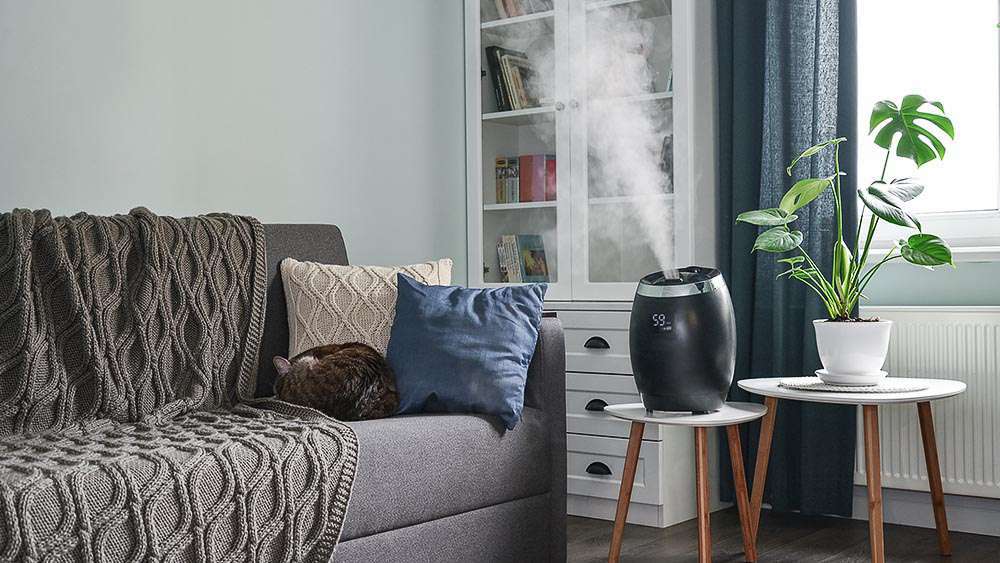
Key Takeaways
- Cold air holds less moisture, leading to dry indoor conditions in winter.
- Combat dry winter air by employing natural methods like cooking and air drying clothes inside.
- Invest in humidifiers and air purifiers to improve indoor air quality and humidity levels during winter.
Winter brings with it a picturesque landscape with blankets of white snow and a frosty chill in the air. On the downside, it can make your home air extremely dry. When the temperature dips during wintertime, so do the humidity levels. Moreover, turning on the heating system further dries out the air in your home.
Dry winter air can be more than just a nuisance; it can cause health issues and pose damage to your home. It can lead to worsening of allergies, dry skin, nose bleeds, trouble breathing, and cracked furniture.
But before you let the stale indoor air get you down, here’s the good news – there are numerous ways you can humidify your home and maintain ideal humidity levels.
- 1. Seal Cracks & Gaps in Your Home
- 2. Automate Your Home Climate
- 3. Invest in a Humidifier
- 4. Run an Air Purifier
- 5. Inspect Your HVAC System
- 6. Utilize Stovetop Steam
- 7. Simmer Fruits & Herbs
- 8. Air Dry Your Clothes
- 9. Dry Hats & Mittens on a Radiator
- 10. Bring Greenery Inside
- 11. Dust Your House Regularly
- 12. Keep Door Open When Showering
- 13. Let Hot Water Sit In the Tub
- 14. Shorten Your Showers
- 15. Use Water Bowls With Heaters
- 16. Spray Down Your Curtains
- 17. Use Decorative Bowls
- 18. Slather on Your Moisturizer
- 19. Keep Yourself Hydrated
- 20. Layer on Extra Clothes
- 21. Open Windows to Let Fresh Air In
- FAQs
- Take Away
1. Seal Cracks & Gaps in Your Home
Sealing and insulating your home is a great first step to counter low humidity issues.
Cold air coming from cracks and gaps will affect the cozy environment you have created inside, forcing you to crank up your heating. This will result in more dry air circulating in your home. To fix this, you should find air leaks in areas such as doors, windows, exterior walls, and the attic and seal them using weatherstripping and caulking.
2. Automate Your Home Climate
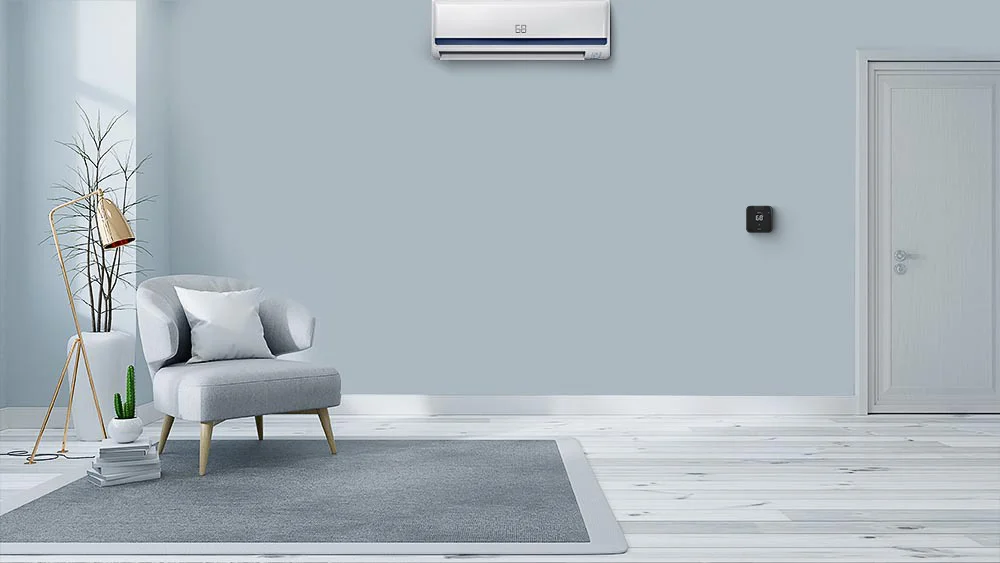
To maintain ideal humidity levels in your home, consider using smart climate control devices such as smart thermostats for central HVAC or smart mini-split thermostats for your ductless systems.
These smart devices have built-in humidity sensors that can monitor and maintain the ideal humidity levels in your house. In addition, you can view your home humidity levels from anywhere using your phone and make changes on the go.
Cielo thermostats for mini-splits have Comfy Mode, which lets you set your preferred humidity range. When the levels deviate from your set value, your unit will automatically trigger to achieve your desired setting. You can also connect your humidifier with a mini-split thermostat as long as it comes with an IR remote control.
To further create a cozy home environment, you can install a Cielo Breez Max and take advantage of its Comfy Max mode. With this feature, you can prevent overheating in winter and prevent excessive dry air that often comes with it.
Related: HVAC Humidity Control – A Guide for Temperature Humidity Control in Air Conditioning Systems
Your best choice to make any mini-split, window,
or portable AC smart. Enhance your comfort and savings.

3. Invest in a Humidifier
In winter, humidity levels drop as cold air holds less moisture than warm air. When the air feels cooler, you crank up the heat, which further removes moisture. Cold, dry air pulls moisture from your skin, mouth, and nose, leaving them itchy and dried out. This vicious cycle continues in the cold season.
The best way to handle this issue is to invest in a humidifier. For dry winter air, you can use a one-room humidifier or a whole-house humidifier. Humidifying the air also makes it easy to breathe. Moreover, you will save on energy bills as you won’t be increasing the temperature now and then.
4. Run an Air Purifier
You spend more time indoors during the cold season. Dry winter air combined with little to no ventilation can cause health problems.
To tackle this, invest in a good air purifier and run it when you are at home. This will help keep the virus, bacteria, and other allergens at bay.
5. Inspect Your HVAC System
Have your HVAC unit inspected before the cold season sets in. Call a professional and have all the main AC components checked for proper functioning. In addition, make sure the evaporator coils and air filters are properly cleaned. If you continue to use your heating system without maintenance, it can affect your home’s air quality.
6. Utilize Stovetop Steam
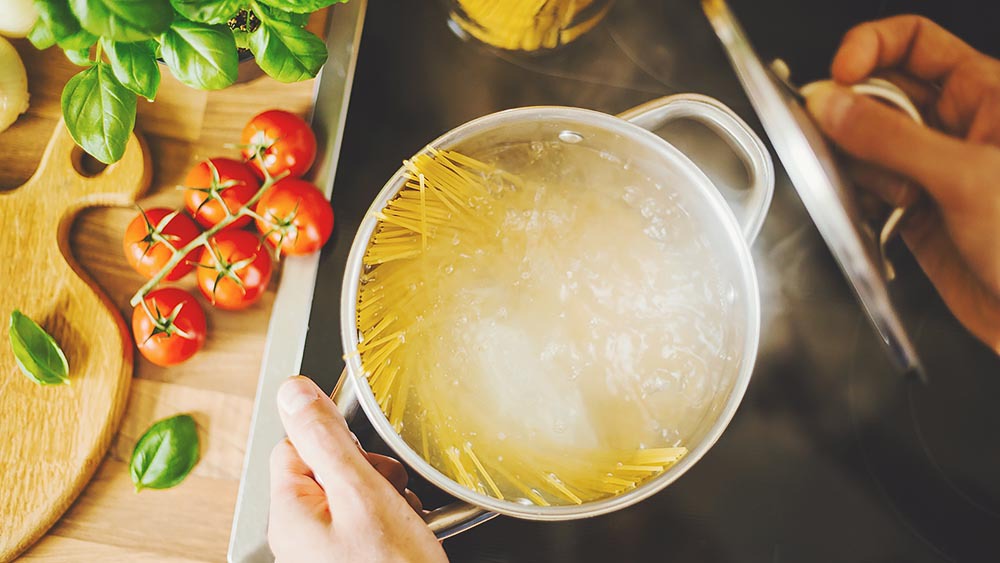
Increase your stovetop cooking to take advantage of the hot steam. Make soups, broths, or boil water for your green tea. Steam from food and boiling water will boost your home’s humidity levels.
7. Simmer Fruits & Herbs
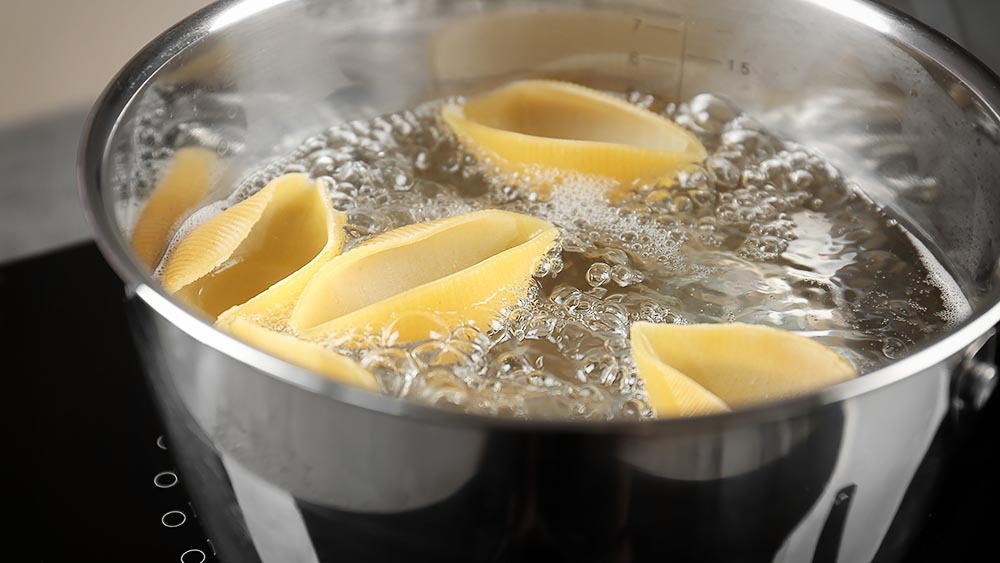
This winter, eliminate air fresheners and use fruits and herbs to make your home smell nice and fresh. Air fresheners contain chemicals hazardous to human health, so you should try to limit their use in your house.
Add lemon, orange, and grapefruit peels and fresh herbs such as cinnamon or ginger in a pot of boiling water and let them simmer for some time. The fruity, spicy aroma will quickly fill your home, and the steam will also boost your home’s humidity levels.
8. Air Dry Your Clothes
This winter season, ditch your electric dryer and switch to air drying. Use a clothing rack and dry your clothes in the house. The moisture from wet clothes will evaporate into the air, increasing humidity levels. This method will also help you save on bills!
9. Dry Hats & Mittens on a Radiator

Place hats, mittens, and other clothing items on the radiator to release moisture in the air. This will save you time hanging laundry in the cold winter air and help it dry out faster.
10. Bring Greenery Inside
Indoor houseplants improve indoor air quality and also increase humidity levels. They release moisture in the air, which can help counter dry air issues in the colder months.
Even if you don’t have a green thumb, there are plenty of low-maintenance plants that thrive indoors with minimal effort, such as pothos, snake plants, and ZZ plants.
11. Dust Your House Regularly

Dusting won’t elevate humidity levels, but it can help with other issues associated with dry air during the winter months.
Due to low moisture content, allergens and dust particles build up in your home. To tackle this, make dusting a regular part of your cleaning routine. Use a microfiber cloth in areas where dust usually accumulates. Regular vacuuming and dusting also ensure your HVAC unit doesn’t circulate dirt particles with conditioned air.
Related: Why Is My House So Dusty? 13 Common Reasons & How to Fix Them
12. Keep Door Open When Showering
Next time you take a shower, try keeping the shower door open. The residual heat from the hot shower will travel to the rest of your home and help to remove the dry winter air.
Note that you will only be able to use this technique if you don’t use a shared bathroom.
13. Let Hot Water Sit In the Tub

After taking a bath, don’t let all that hot steam go to waste. Instead, leave the door open for some time to let the water evaporate, increasing the moisture level in your house.
14. Shorten Your Showers
Taking hot showers in winter can dry out your skin. Limit your shower time to 10-15 minutes. Also, try using lukewarm water instead of hot water. Some people like using hot water in winter, which irritates the skin and prevents it from locking in hydration.
15. Use Water Bowls With Heaters
If you use a radiator, consider placing a water bowl on top of the radiator or near to deal with the humidity woes. The water heated by your radiator will evaporate in the air, raising humidity levels. Some companies have even designed special humidity tanks that you can use with your heating system.
16. Spray Down Your Curtains
Use a spray bottle to spritz your curtains during the daytime. The water will evaporate, and moisture will be released into the air. You can also open your windows and let the sunlight in to speed up the evaporation process. Plus, opening up windows will help with air circulation and remove the stale, dry air from your house.
17. Use Decorative Bowls
Decorative bowls and vases add to your home aesthetic and help you tackle dry air during the winter season. You might already have them on your living room shelves or dining table. To increase humidity, pour water into the bowls and vases. The water will slowly evaporate and raise humidity. Put the decorative pieces near a sunny window to increase the evaporation rate.
18. Slather on Your Moisturizer
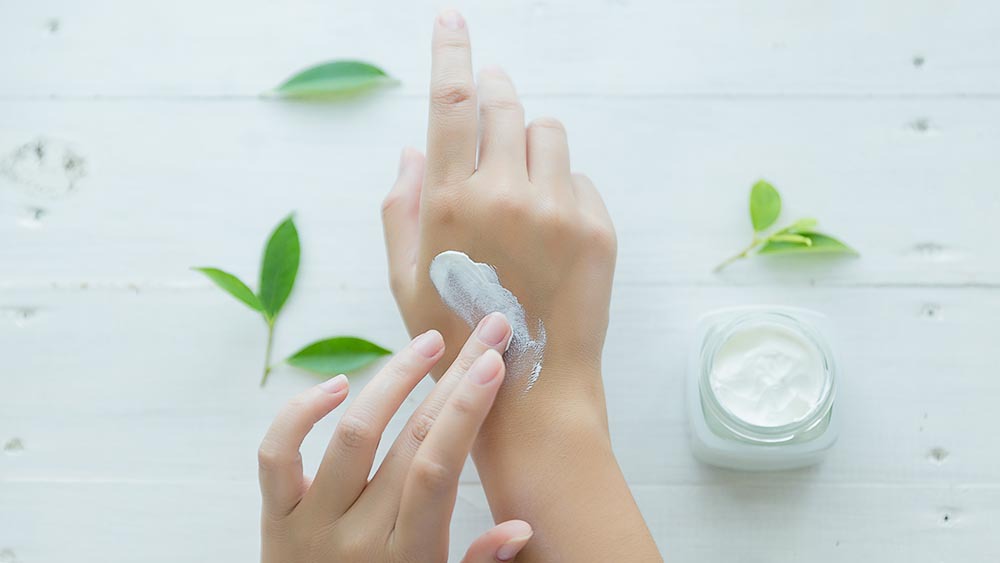
During the winter months, you may suffer from red, rough, raw, and itchy skin. The best way to combat skin dryness is to lock in moisture. Use ingredients that are better able to retain hydrated skin, such as ceramides, glycerin, and hyaluronic acid. Also, don’t forget to wear lip balm to deal with parched lips.
19. Keep Yourself Hydrated
Dry winter air can pull the moisture from your body, leaving it dehydrated. So, it’s important to keep yourself hydrated even though you may not feel thirsty in the colder months.
Drink lukewarm water and consume hot beverages such as green tea, cinnamon, and hot chocolate. These will not only warm you up but also replenish the lost moisture. You can also consume fluid-filled fruits such as oranges and strawberries to increase your water intake.
20. Layer on Extra Clothes

Instead of cranking up your thermostat, try putting on an extra layer of clothes to deal with frigid temperatures. You will feel warm and cozy without the heating system sucking moisture from your home.
21. Open Windows to Let Fresh Air In
While it may seem counterintuitive, opening the windows can actually help remove the stale, dry air from your house.
Open windows during the daytime to let fresh air in. It will help you breathe easily, and your skin won’t feel dry and itchy. Plus, it will also improve your home air quality. You can close your windows when cold winds take over as the sun goes down.
Related: Home Ventilation: Types, Ways to Improve, Do’s & Don’ts
FAQs
Why Does Air Tend to Get Dry in the Winter?
Cold air naturally holds less moisture than warm air, making dry conditions common during winter. The issue of dry air in winter becomes worse when central heating is used. When cold, dry air is heated, the air tends to become even drier because your system not only heats the air but also strips it of moisture.
Why Is Dry Air in Winter a Health Concern?
Dry winter air can cause many health issues and discomfort. The dryness of the air seeps moisture from your skin, nose, throat, and eyes, leading to dry nasal passages, sore throats, itchy skin, and even irritated eyes. The lack of moisture in your nose can cause nosebleeds and make it harder to trap viruses and bacteria. Dry winter air combined with heating systems can cause dust and allergens to remain in the air for longer, worsening asthma and irritating airways.
What’s more, when you’re feeling extremely cold, it is often tempting to jump in the shower for a hot bath or crank up the thermostat. This further strips away natural oils and worsens your skin’s dryness.
Take Away
Dry winter air can cause significant discomfort and health issues if not addressed promptly. It can lead to problems like dry skin, irritated eyes, and increased vulnerability to colds and allergies. To combat the effects of low humidity, seal any cracks in your home to prevent cold, dry air from seeping in and consider using solutions like a humidifier and a smart climate control device to maintain optimal moisture levels. By staying proactive and incorporating these strategies into your routine, you can create a healthier, more comfortable indoor environment and enjoy a cozy, worry-free winter season.








